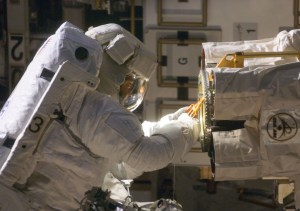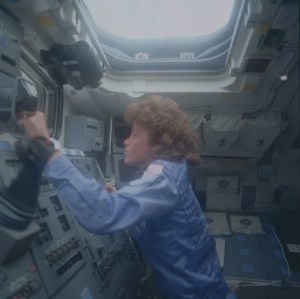The primary goals of Project Gemini included proving the techniques required for the Apollo Program to fulfill President John F. Kennedy’s goal of landing a man on the Moon and returning him safely to Earth before the end of the 1960s. These techniques included rendezvous and docking, spacewalking, and ensuring that spacecraft and astronauts could function for at least eight days, the minimum time for a roundtrip lunar mission. The eight previous Gemini missions in 1965 and 1966 demonstrated the spacecraft’s space worthiness, the basic feasibility of spacewalking, extended flight durations to 14 days, and demonstrated space rendezvous and docking techniques. The primary goals of the three-day Gemini XI mission included docking with a target vehicle on the first revolution, and performing two spacewalks.
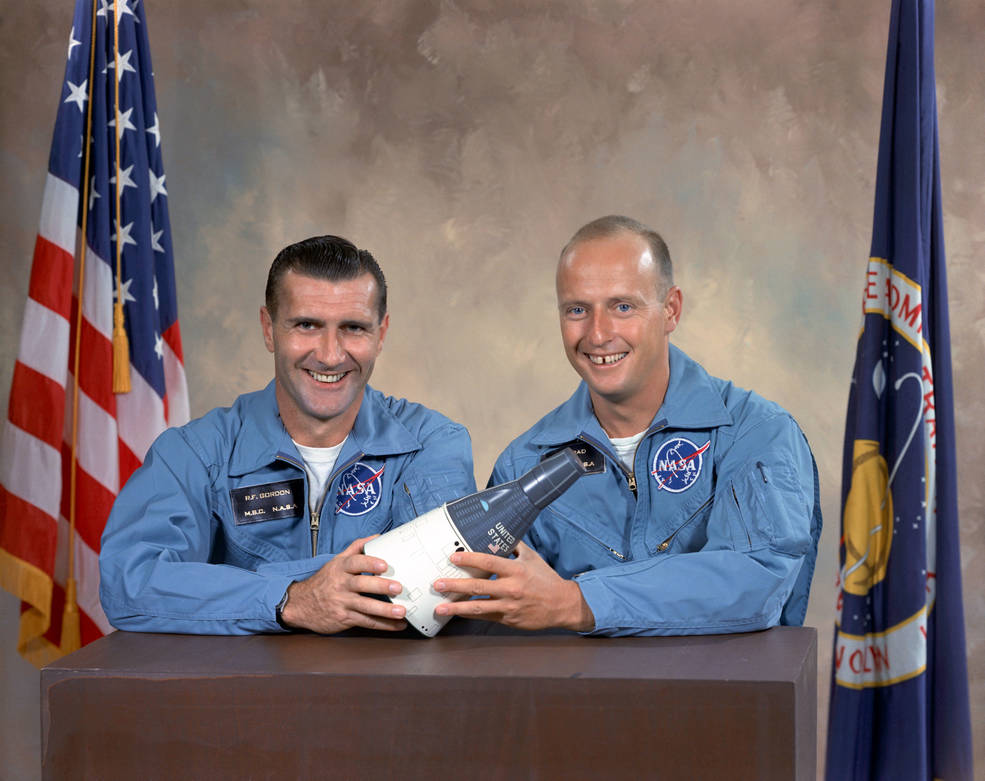
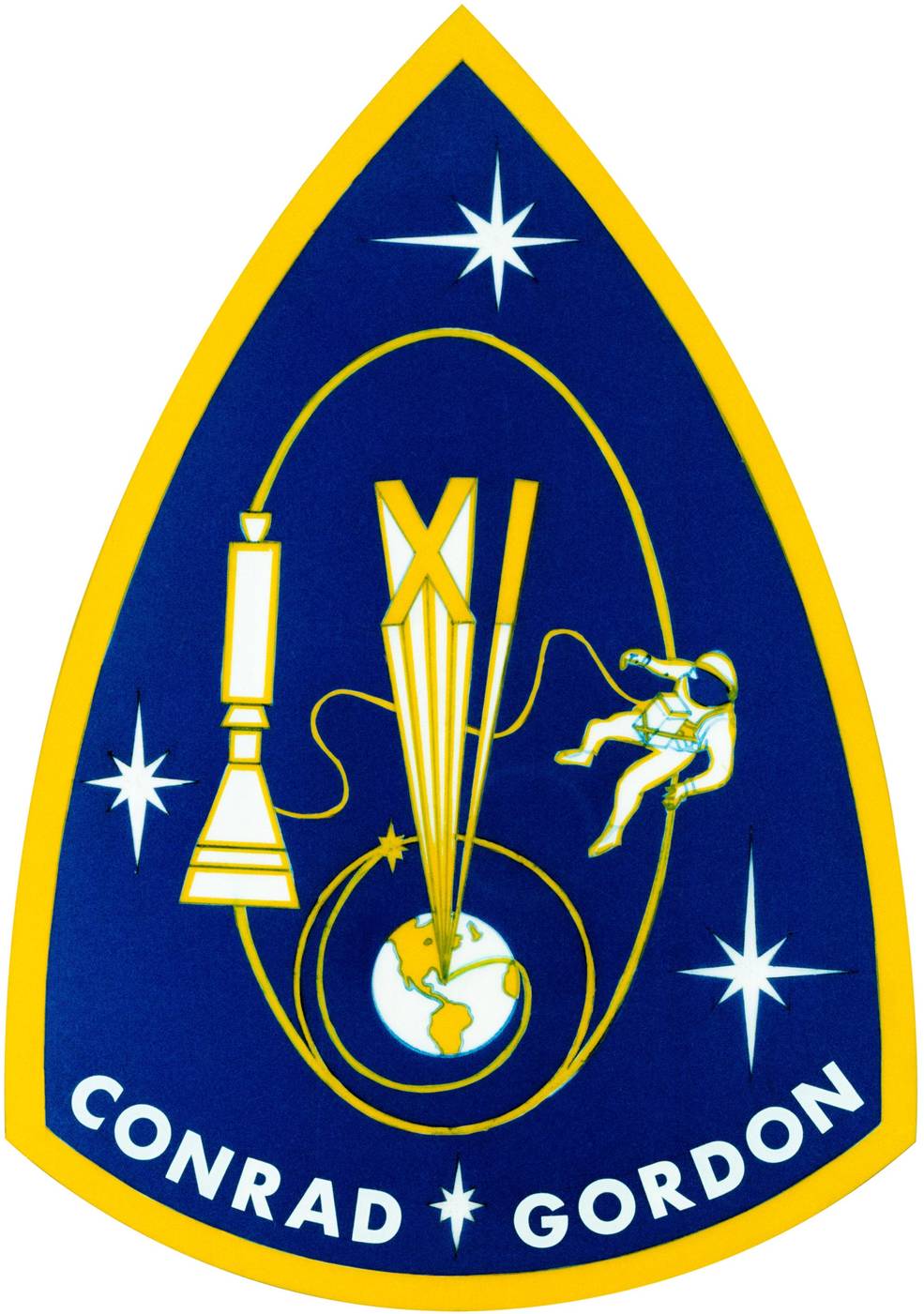
Left: The Gemini XI crew of Richard F. Gordon, left, and Charles “Pete” Conrad.
Right: The Gemini XI crew patch.
In March 1966, NASA selected Gemini V veteran Charles “Pete” Conrad and spaceflight rookie Richard F. Gordon as the prime crew for Gemini XI, with Gemini VIII veteran Neil A. Armstrong and rookie William A. Anders, as their backups.
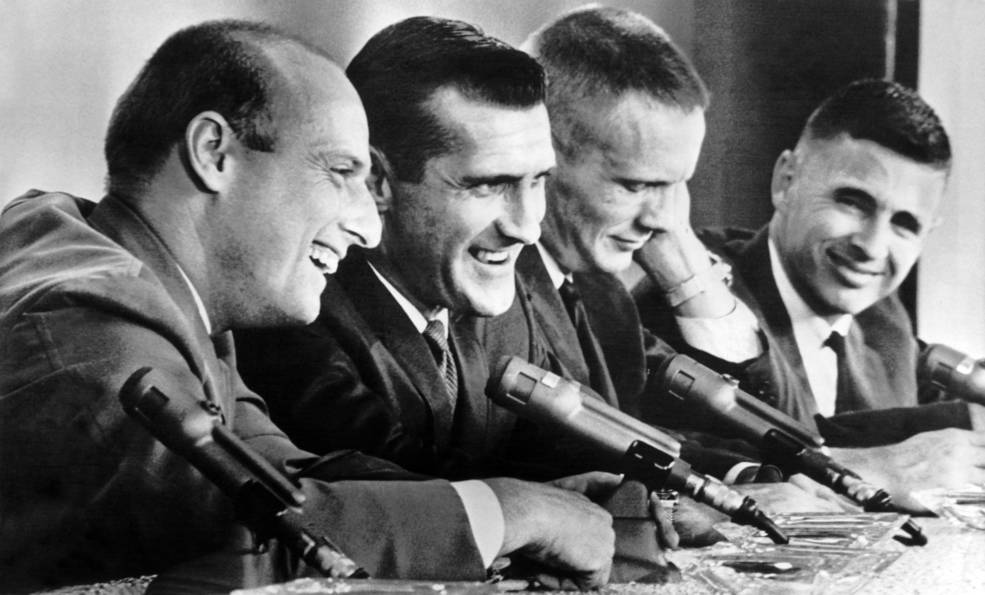
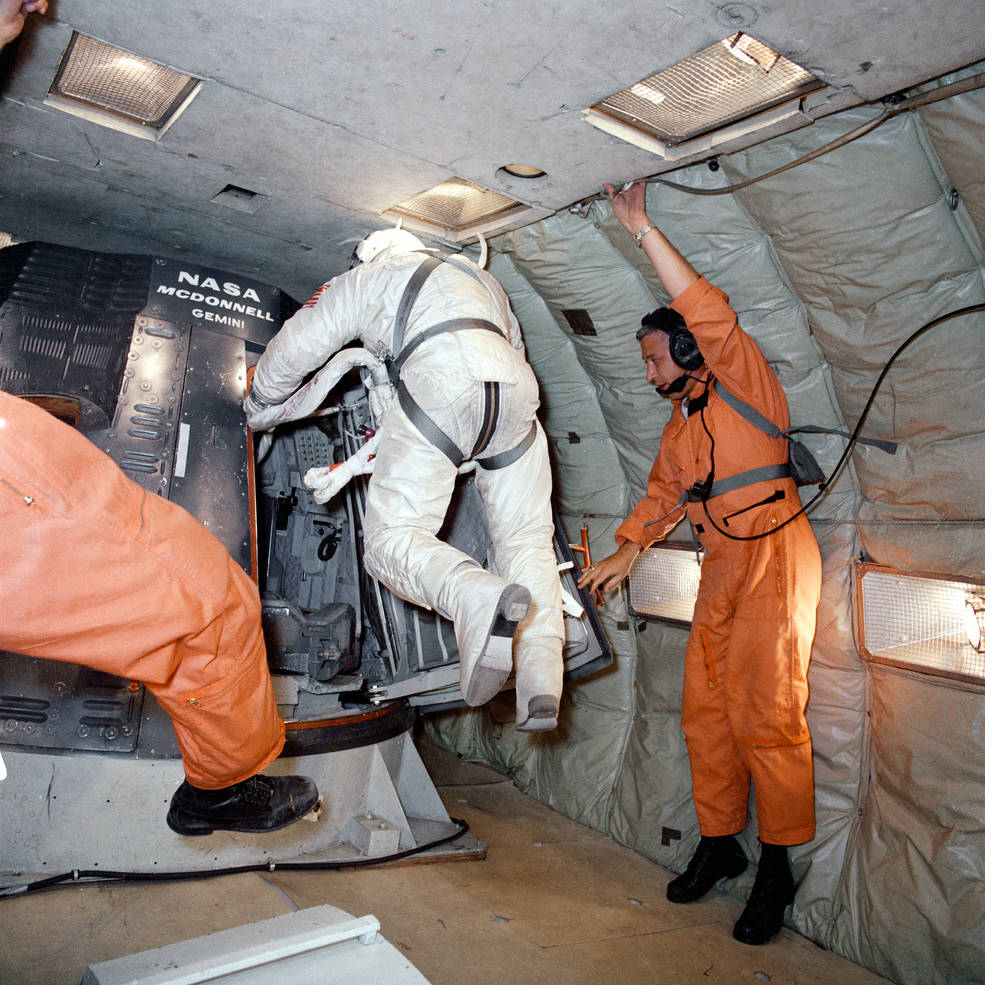
Left: Preflight press conference with the Gemini XI prime crew of Charles “Pete” Conrad,
left, and Richard F. Gordon, and the backup crew of Neil A. Armstrong and
William A. Anders. Right: Gordon during his spacewalk training in
a zero-g aircraft.
On Aug. 20, Conrad and Gordon, along with their backups Armstrong and Anders, described their upcoming three-day mission to reporters during a press conference at the Manned Spacecraft Center (MSC), now NASA’s Johnson Space Center in Houston. The flight plan called for Gemini XI to launch about 90 minutes after their Agena XI docking target vehicle and confirmation that the target had achieved its correct orbit. Conrad and Gordon would perform a direct ascent rendezvous profile, meaning approaching and docking their Gemini spacecraft with the Agena target on their very first orbit around the Earth. This maneuver simulated an Apollo Lunar Module lifting off from the surface and performing a rendezvous with the Command Module in lunar orbit. To successfully complete this so-called M=1 rendezvous, Gemini XI needed to liftoff within a two-second launch window. Conrad and Gordon would each practice two docking maneuvers to gain proficiency. On the second day, Gordon would perform his first spacewalk, a planned two-hour excursion during which he would attach a 100-foot tether between the Gemini and the Agena, and evaluate the Hand-Held Maneuvering Unit (HHMU) for translating between the two spacecraft. During the mission’s third day, the astronauts would fire the Agena’s main engine to raise the high-point of their orbit to a then-record 850 miles, and after two orbits, fire the engine again to return them to their original altitude. Gordon would then perform a two-hour standup spacewalk to conduct photography experiments. After undocking from the Agena, they planned to conduct experiments with the two spacecraft connected by the 100-foot tether. After a three-day mission, they would return to Earth, flying a completely automatic deorbit and reentry for a recovery in the Atlantic Ocean.
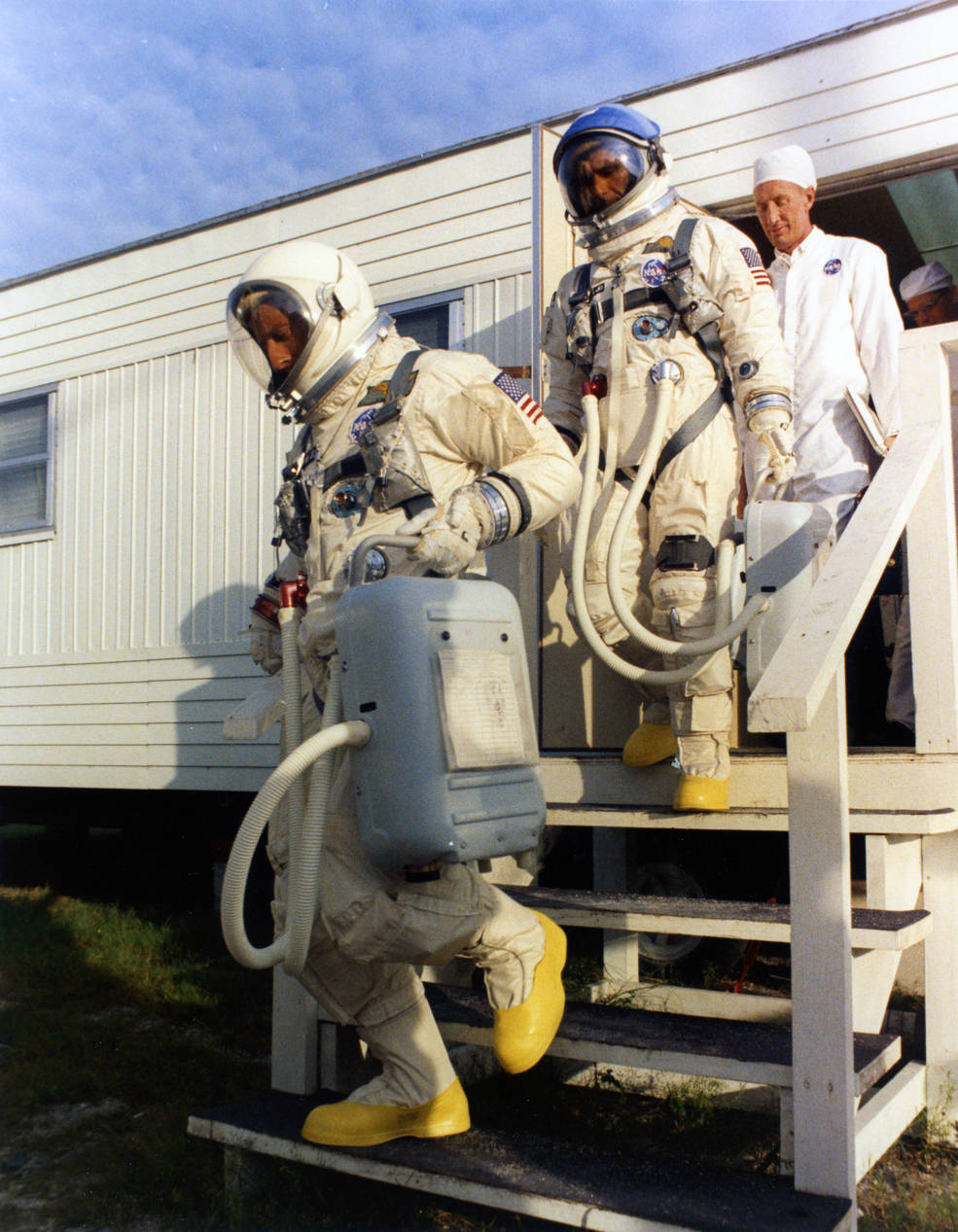
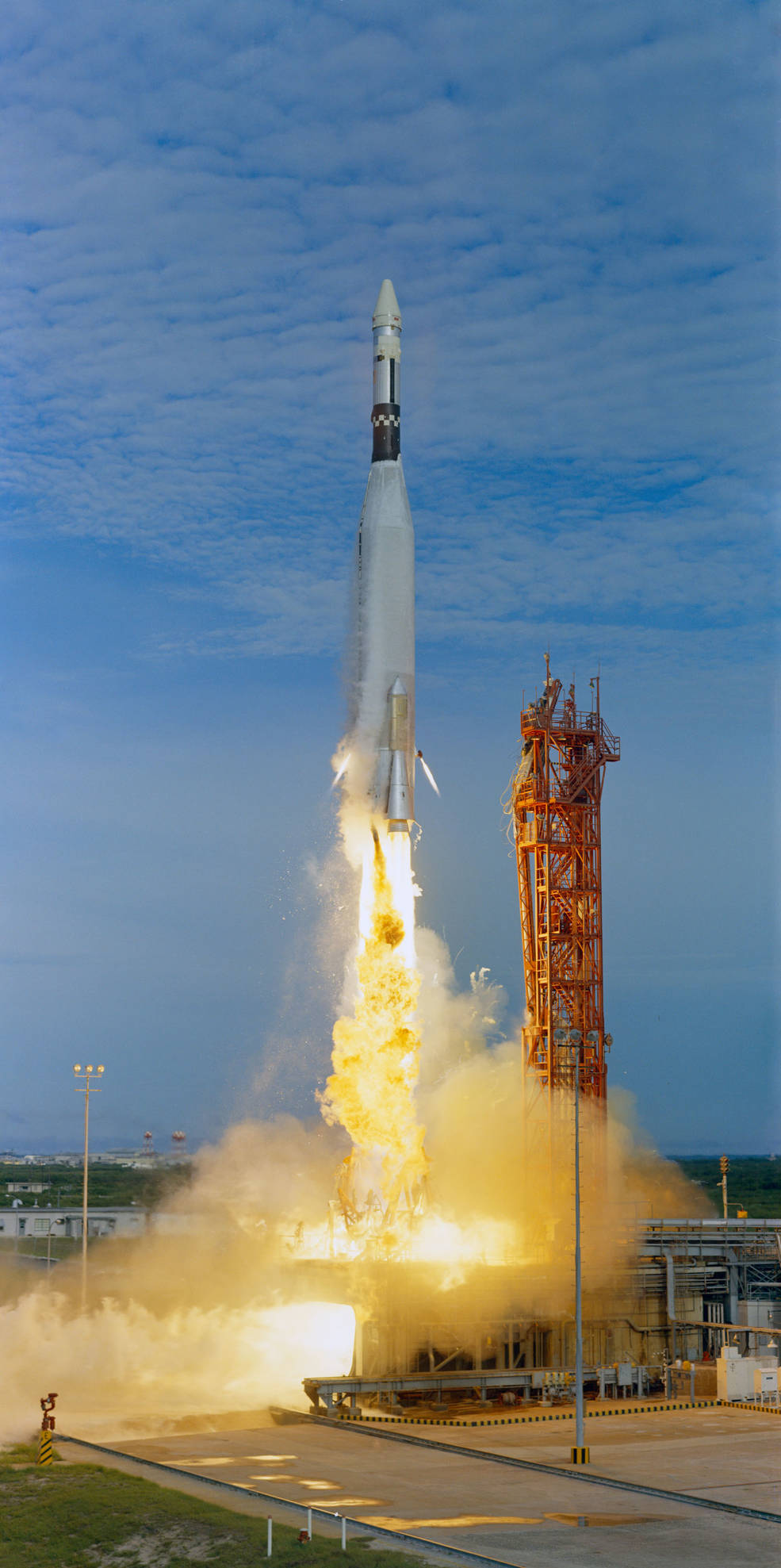
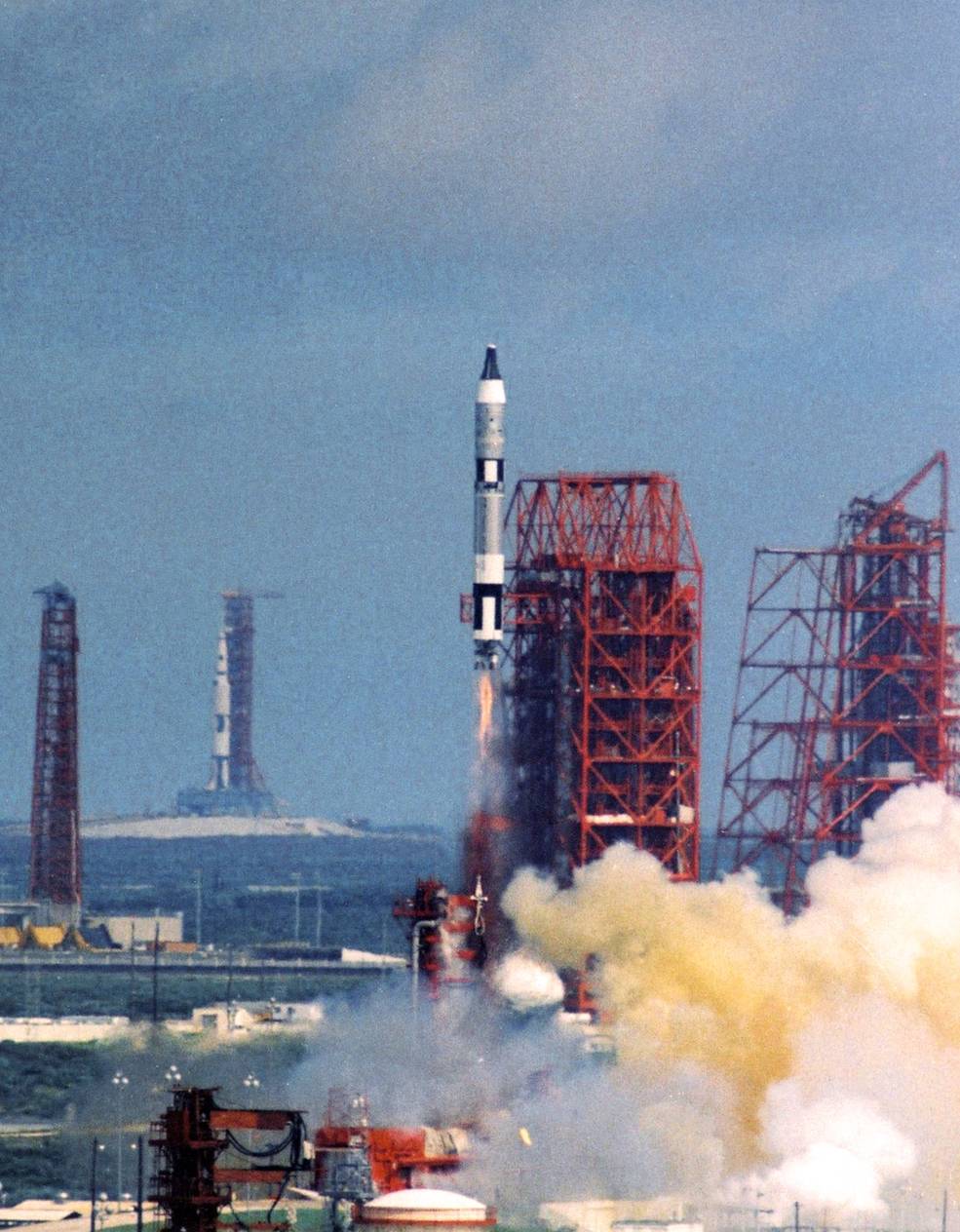
Left: Gemini XI astronauts Charles “Pete” Conrad, left, and Richard F. Gordon depart for Launch Pad 19 at the Cape Kennedy Air Force Station, now the Cape Canaveral Space Force Station in Florida, to board their spacecraft. Middle: The launch of the Agena XI Target Vehicle. Right: The launch of Gemini XI, with the Saturn 500F test vehicle seen in the background on Launch Pad 39A.
A minor leak in their Titan II rocket’s first stage scrubbed the first launch attempt on Sept. 9, 1966, and the next day a problem with the Agena’s guidance system delayed the dual launches to Sept. 12. Conrad and Gordon boarded their Gemini spacecraft shortly before the Agena lifted off and achieved its proper orbit. Gemini XI successfully launched within its two-second launch window and began the chase to catch up with the Agena. As a team of controllers at the Mission Control Center at MSC led by Flight Director Glynn S. Lunney monitored the mission, Conrad and Gordon activated their spacecraft’s radar and under computer direction, they completed a series of maneuvers to quickly reach the Agena. Just 85 minutes after launch, Conrad radioed to capsule communicator John W. Young, “Would you believe M=1?” indicating he had completed the world’s first direct ascent rendezvous. Nine minutes later, he docked the two spacecraft. Conrad and Gordon then undocked and redocked three more times, giving both astronauts practice conducting the critical maneuver. After a busy first day, they began their first sleep period in space.
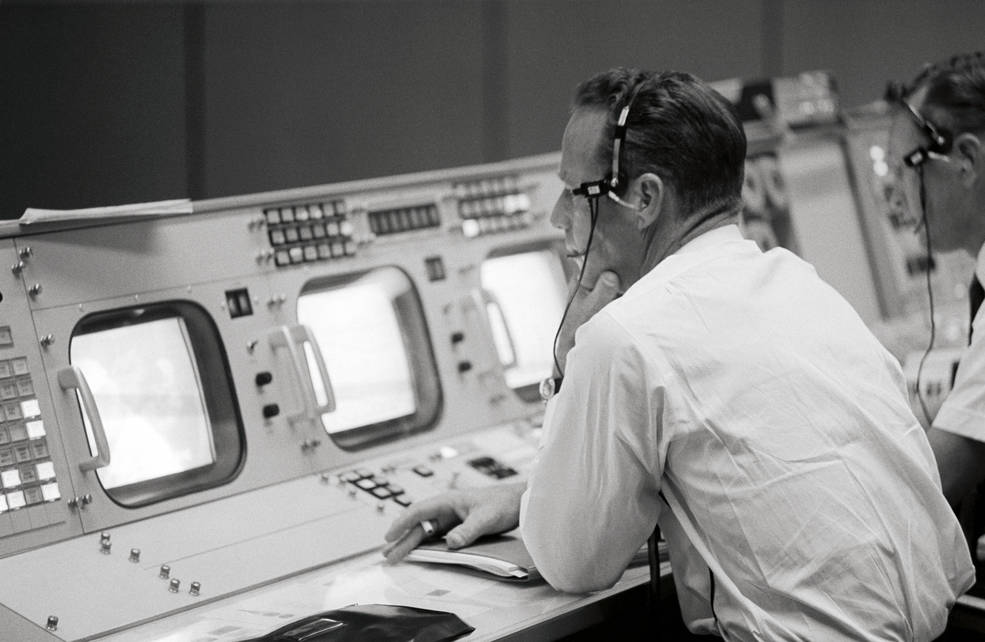
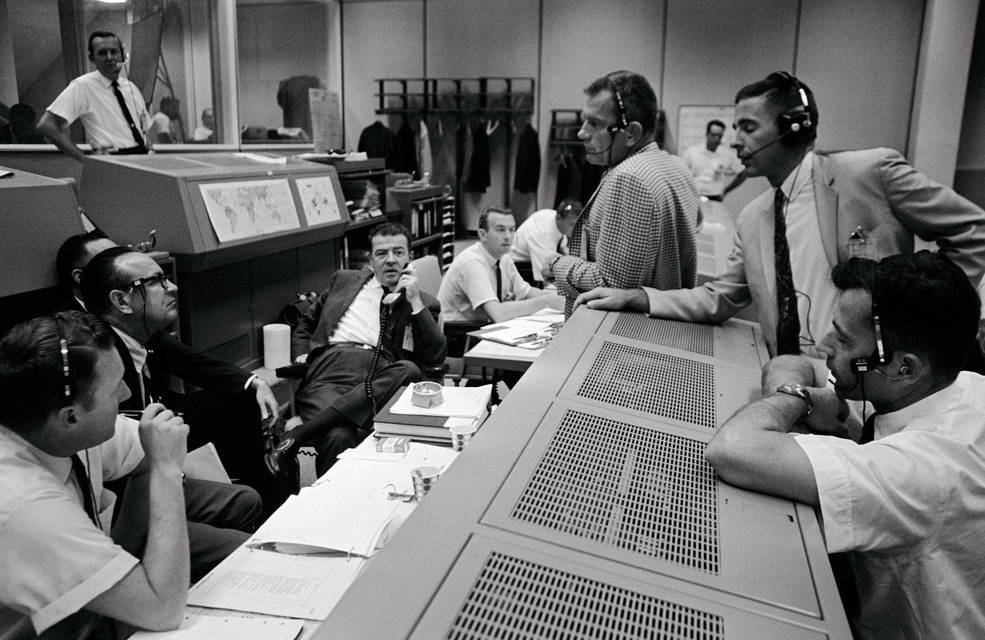
Left: Astronaut M. Scott Carpenter monitors the launch of Gemini XI from the Mission Control Center at the Manned Spacecraft Center, now NASA’s Johnson Space Center in Houston. Right: During Gemini XI’s second day, astronauts William A. Anders and John W. Young at right discuss the status of the flight with mission managers.
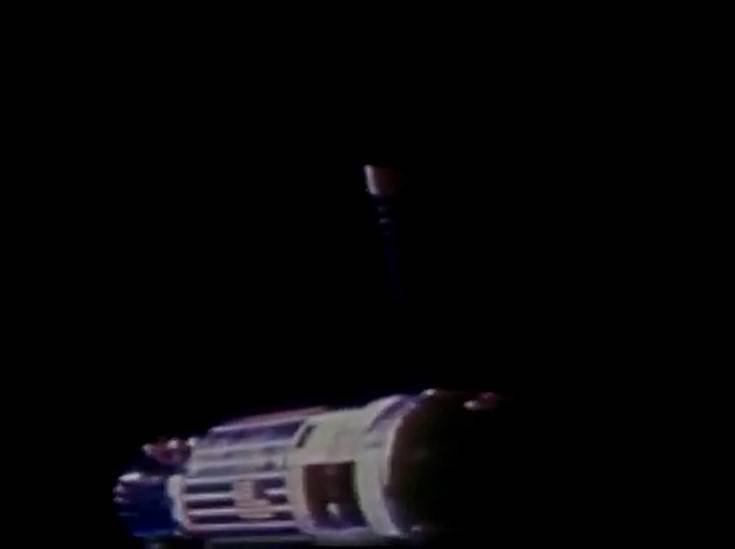
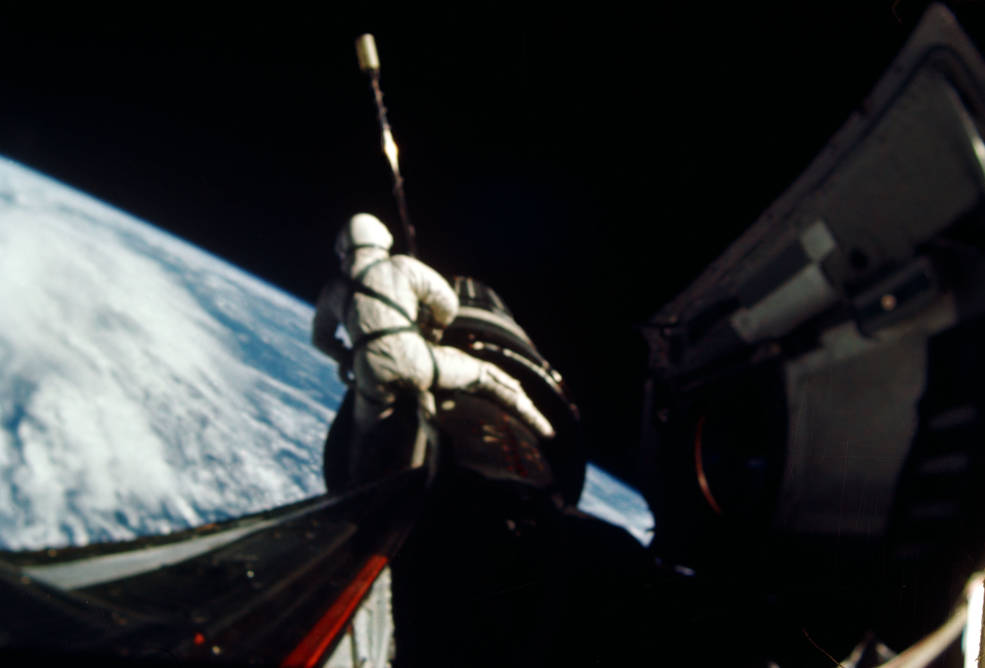
Left: Still image from a film showing Gemini XI approaching the Agena XI target shortly before docking. Right: Gemini XI astronaut Richard F. Gordon straddling the Agena’s docking collar during the mission’s first spacewalk.
Their second day in space began with Gordon’s first spacewalk. Struggling to fit his sun visor to his helmet while still inside the spacecraft, Gordon began the spacewalk already tired and overheated. After opening the hatch, he easily installed a handrail and retrieved a scientific experiment package from the outside of the spacecraft, but had some difficulty installing a camera. Once he accomplished that, Gordon attempted to jump from the Gemini to the Agena to retrieve the 100-foot tether, but he missed and ended up swinging back around on his own tether to the back of the Gemini. Conrad reeled him back toward the hatch, and on his second attempt Gordon reached the Agena and retrieved the tether and began connecting it to the front of the Gemini. In doing so, he straddled the Agena’s docking collar, eliciting a “Ride ‘em, cowboy!” comment from Conrad. But the work proved more difficult than expected, and Gordon’s suit couldn’t keep up with his exertions. His right eye blinded by sweat, Gordon was exhausted. Concerned for his safety, Conrad told him to return to the spacecraft, ending the first spacewalk after just 38 minutes instead of the planned two hours. The HHMU evaluation and tests of a power drill could not be accomplished. Later in the day, the astronauts briefly opened the spacecraft’s hatch to discard some unneeded equipment, freeing up space inside the cramped spacecraft. They spent the remainder of the day conducting experiments and taking photographs before going to sleep.
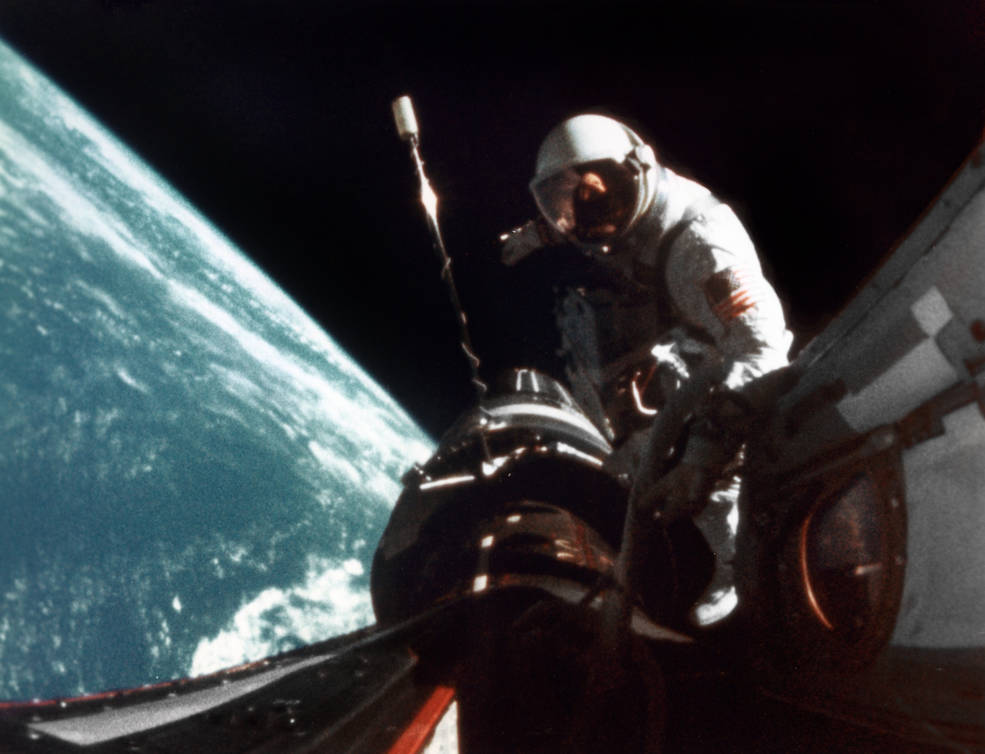
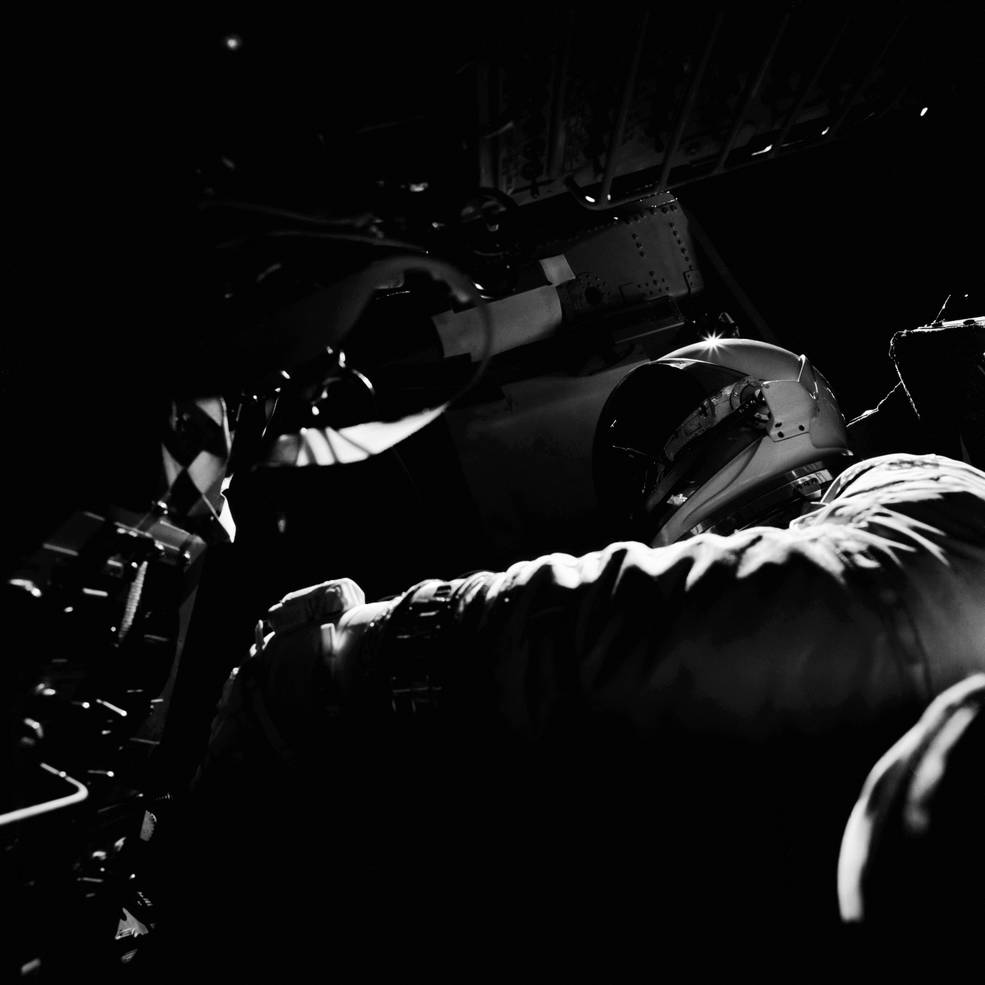
Left: Gemini XI astronaut Richard F. Gordon returning to the spacecraft’s hatch at the conclusion of the first spacewalk. Right: Gordon about to open the hatch to discard some unneeded equipment.
The first major activity for the crew’s third day in space involved the ignition of the Agena’s main engine. Conrad exuberantly called to the ground, “Whoop-de-doo! [That’s] the biggest thrill of my life!” The 26-second burn raised the apogee, or orbital high point, of the docked spacecraft to 853 miles, breaking Gemini X’s record and to this day the highest altitude attained during any non-lunar crewed mission. The astronauts took some spectacular photos when they reached that altitude flying over western Australia, the Earth’s curvature more evident than from lower altitudes. Conrad and Gordon described the view as “spectacular” and “fantastic.” Two revolutions later, they fired the Agena’s engine a second time to return to their previous lower altitude. Gordon then opened the hatch to conduct a 2-hour and 8-minute standup spacewalk, during which he stood in the spacecraft’s open hatch conducting several science experiments and taking photographs. Following the spacewalk, Conrad and Gordon undocked from the Agena, with the 100-foot tether still connecting the two spacecraft. After a brief but unsuccessful attempt at achieving a gravity-gradient attitude, with the heavier Agena pointing toward the Earth, Conrad fired the Gemini’s thrusters to initiate a slow 38-degree-per-minute spin of the two spacecraft around their common center of gravity. After increasing the rotation rate to 55 degrees per minute, they generated an artificial gravity field of about 0.00015 g, too weak for the astronauts to feel but enough that a camera released in the spacecraft drifted toward the rear of the cabin along the tether’s axis. After three hours of tether operations, the astronauts jettisoned it from the Gemini spacecraft and backed away from the Agena. They began their last sleep period in space.
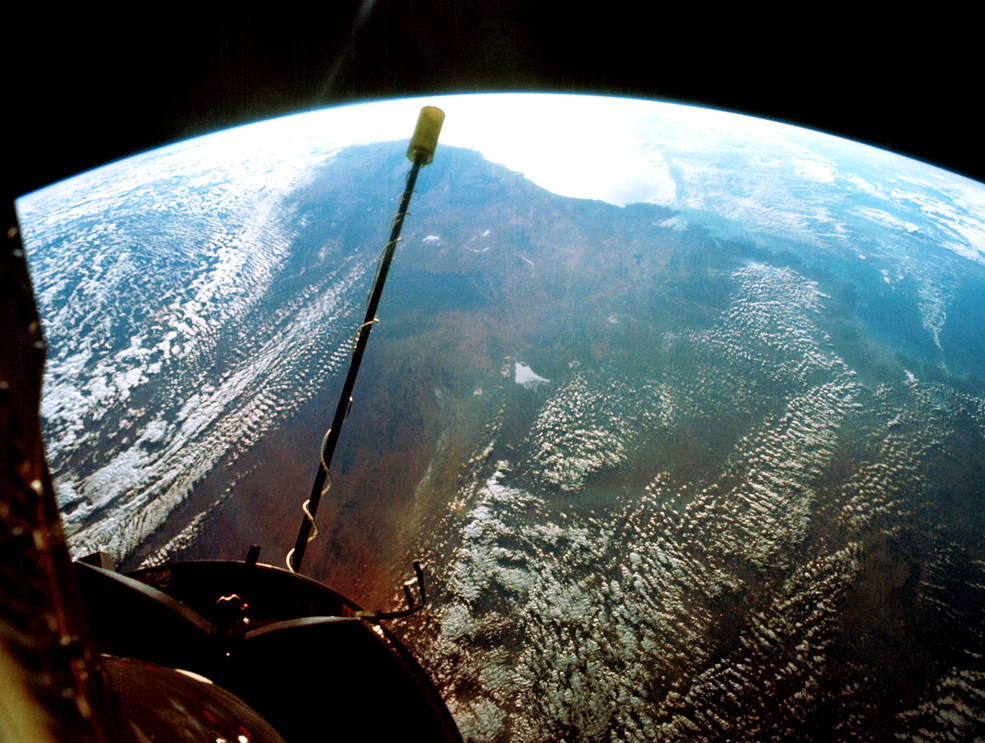
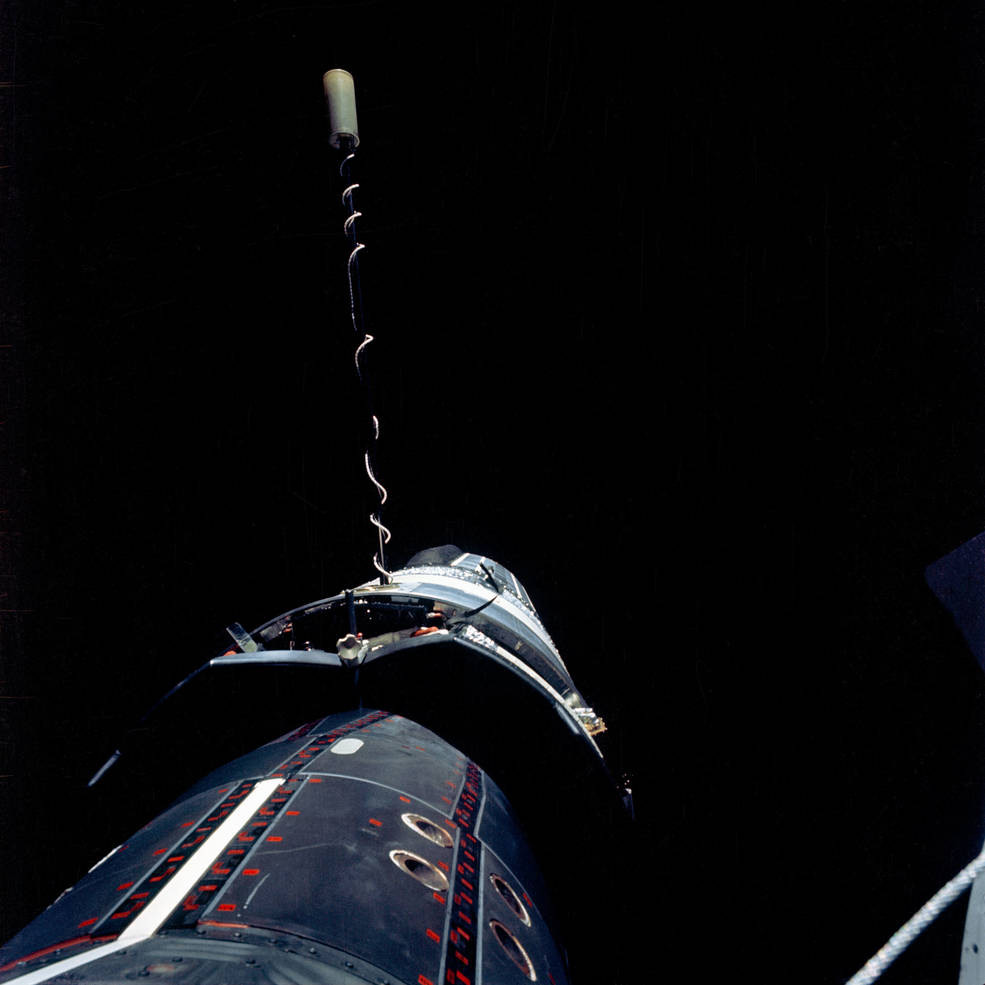
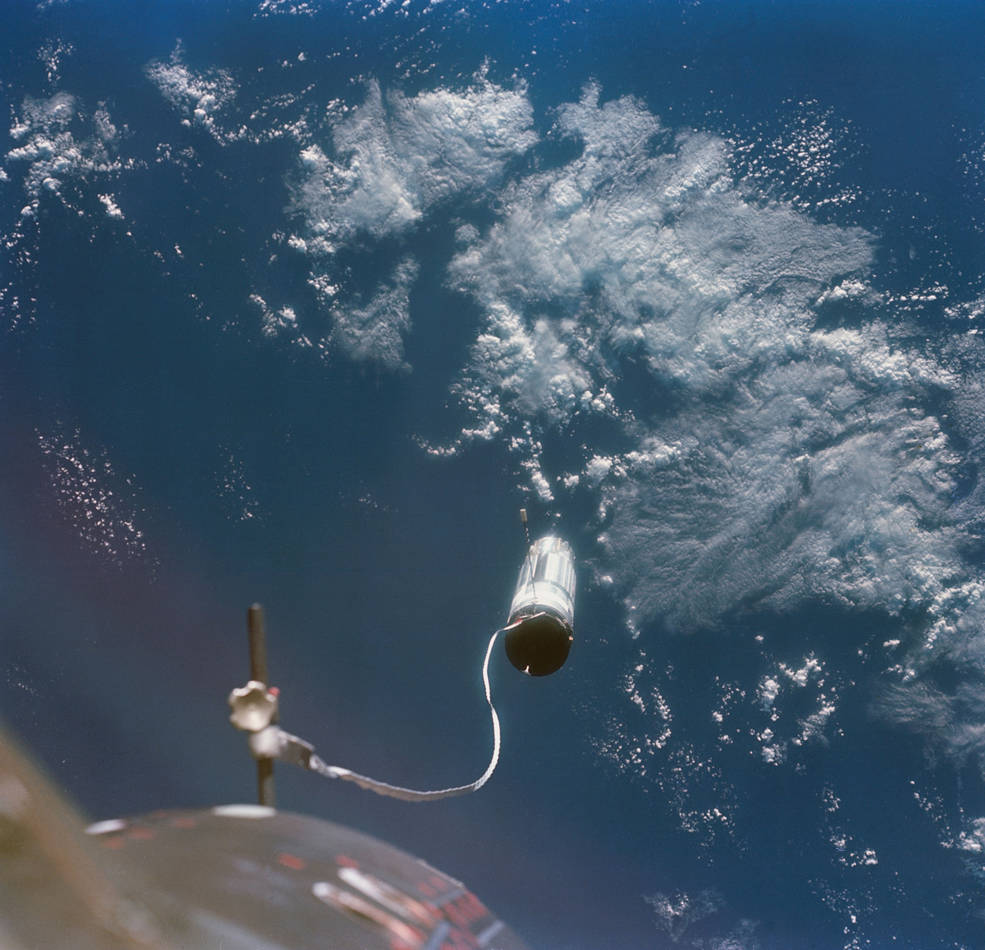
Left: Western Australia as seen from Gemini XI at an altitude of 853 miles. Middle: View of the nose of the Gemini spacecraft docked with the Agena, taken by astronaut Richard F. Gordon during his second spacewalk. Right: The Agena vehicle at the end of a 100-foot tether attached to the Gemini spacecraft.
On their last day in space, at the request of Mission Control, Conrad and Gordon performed a second unplanned rendezvous with the Agena, coming within 50 feet of the target vehicle. Conrad then fired the Gemini’s thrusters to separate from the Agena for the last time. Three hours later, the spacecraft’s autopilot directed the reentry burn. From then on, other than the crew jettisoning the spacecraft’s equipment module, the guidance computer flew the remainder of the reentry through splashdown, automatically guiding Gemini XI to within two miles of the splashdown target in the Atlantic Ocean and less than three miles from the prime recovery ship U.S.S. Guam (LPH-9). The mission lasted two days 23 hours and 17 minutes.
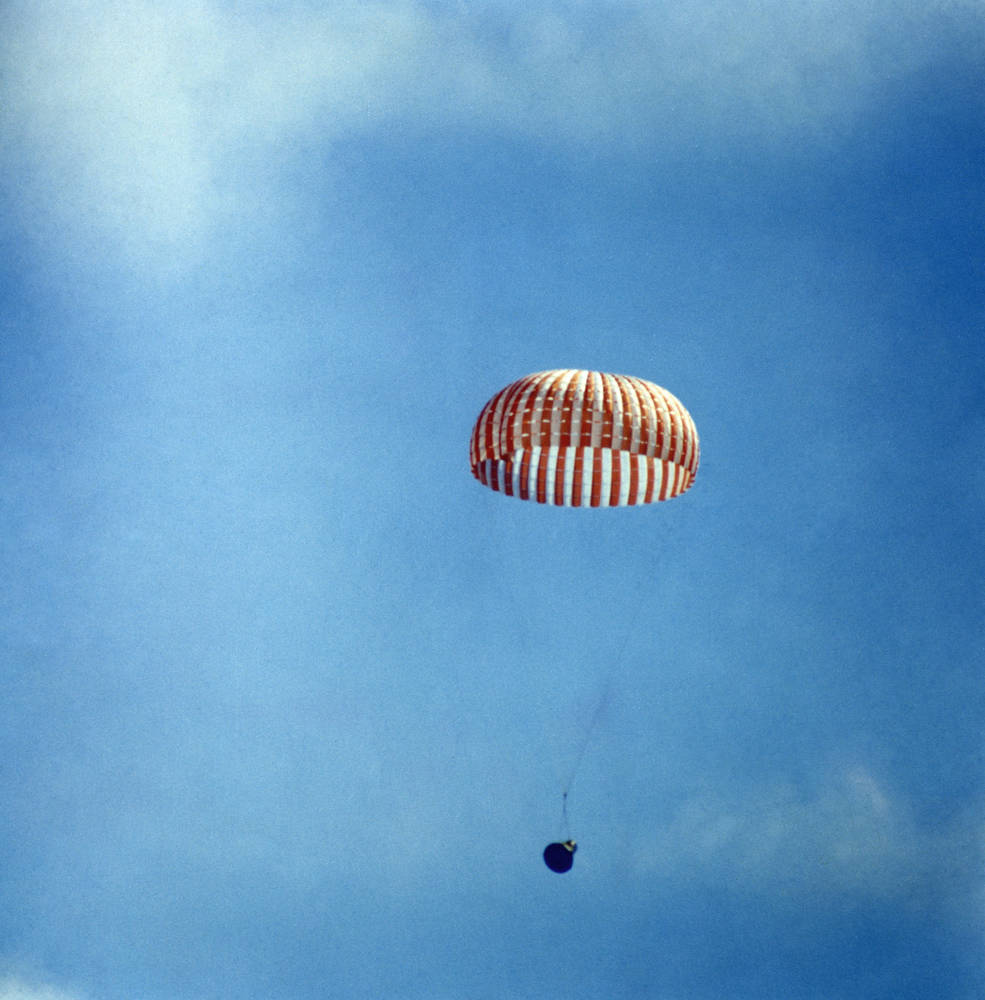
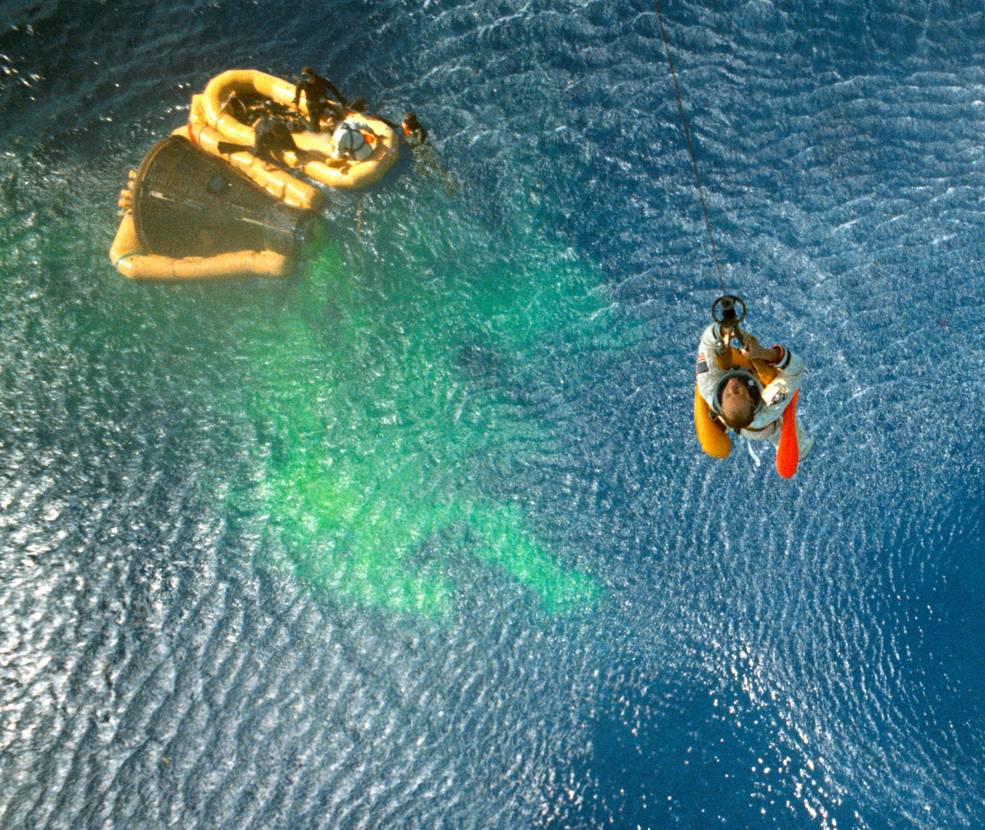
Left: The Gemini XI spacecraft descending on its parachute, shortly before splashdown.
Right: Gemini XI astronaut Charles “Pete” Conrad, right, being hoisted aboard the
recovery helicopter while Richard F. Gordon awaits his turn in the life raft.
Conrad and Gordon elected to exit their spacecraft in the water and onto a life raft. Rescue crews hoisted them aboard a helicopter that flew them to the deck of the carrier for a celebratory welcome reception. Sailors later hoisted the Gemini XI spacecraft onto the ship. The astronauts flew by helicopter back to NASA’s Kennedy Space Center in Florida for several days of debriefings before returning to Houston’s Ellington Air Force Base near MSC for reunions with their families.
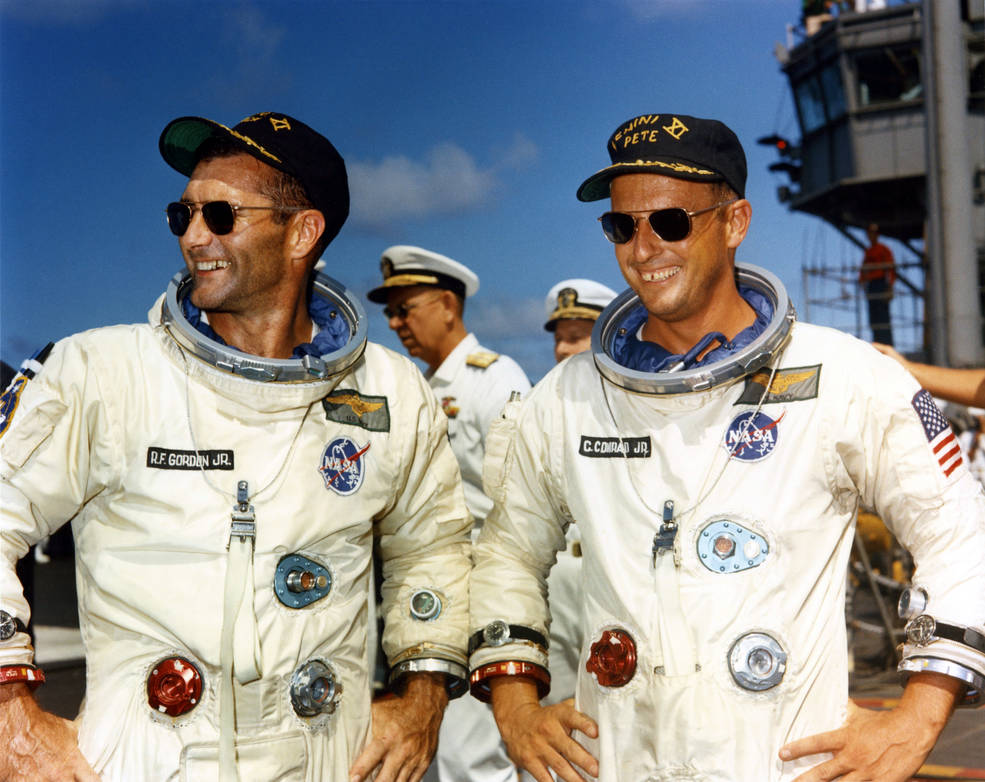
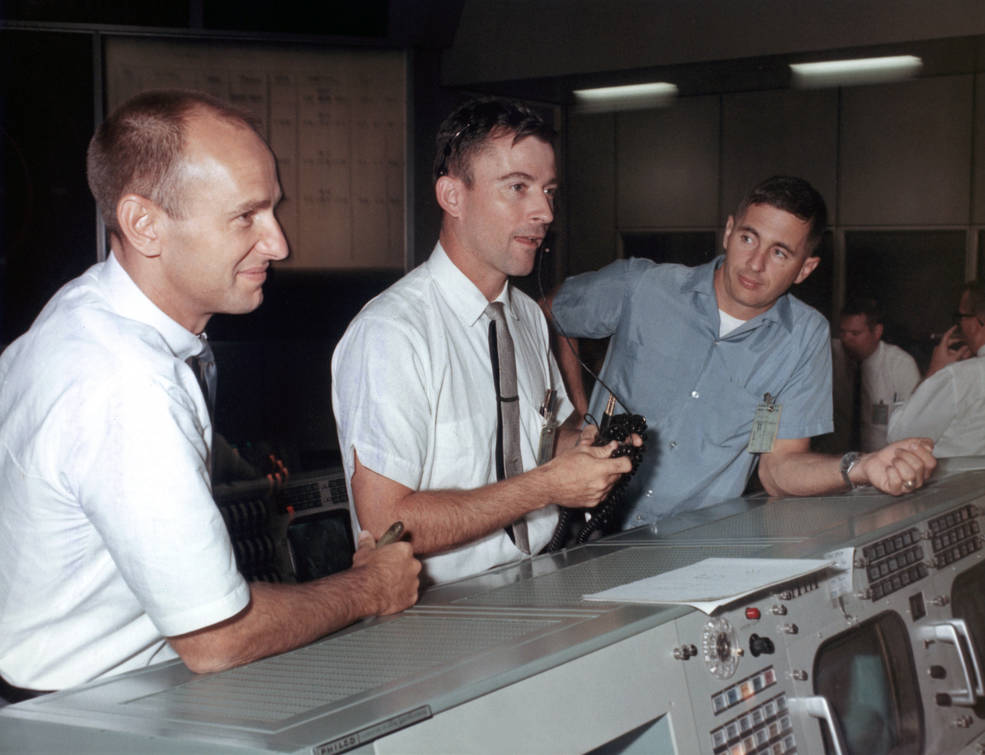
Left: Gemini XI astronauts Richard F. Gordon, left, and Charles “Pete” Conrad on the deck of the prime recovery ship the U.S.S. Guam. Middle: In the Mission Control Center at the Manned Spacecraft Center, now NASA’s Johnson Space Center in Houston, capsule communicators astronauts Alan L. Bean, left, John W. Young, and William A. Anders enjoy a light moment.
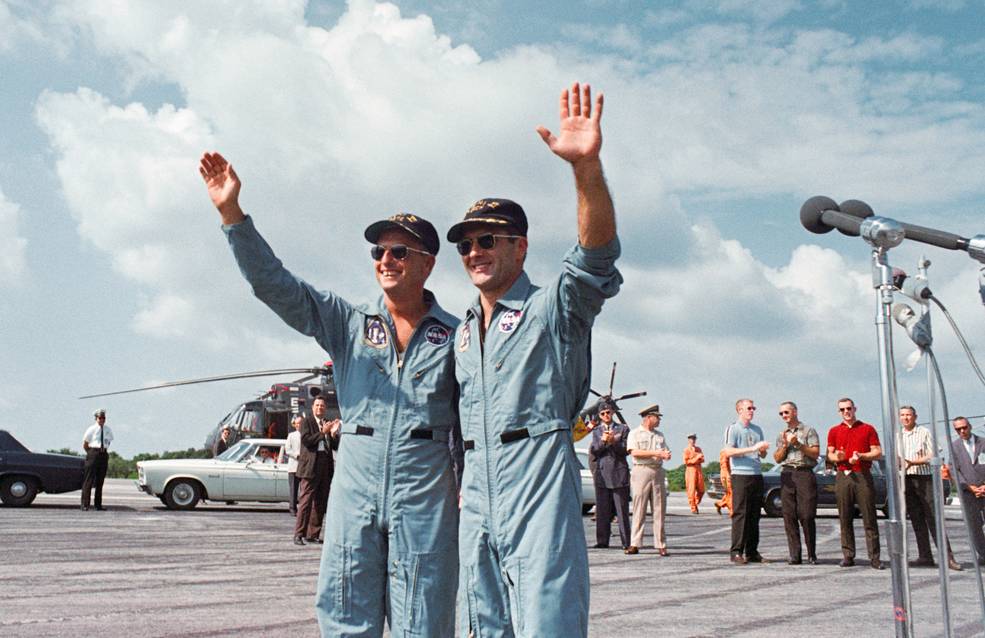
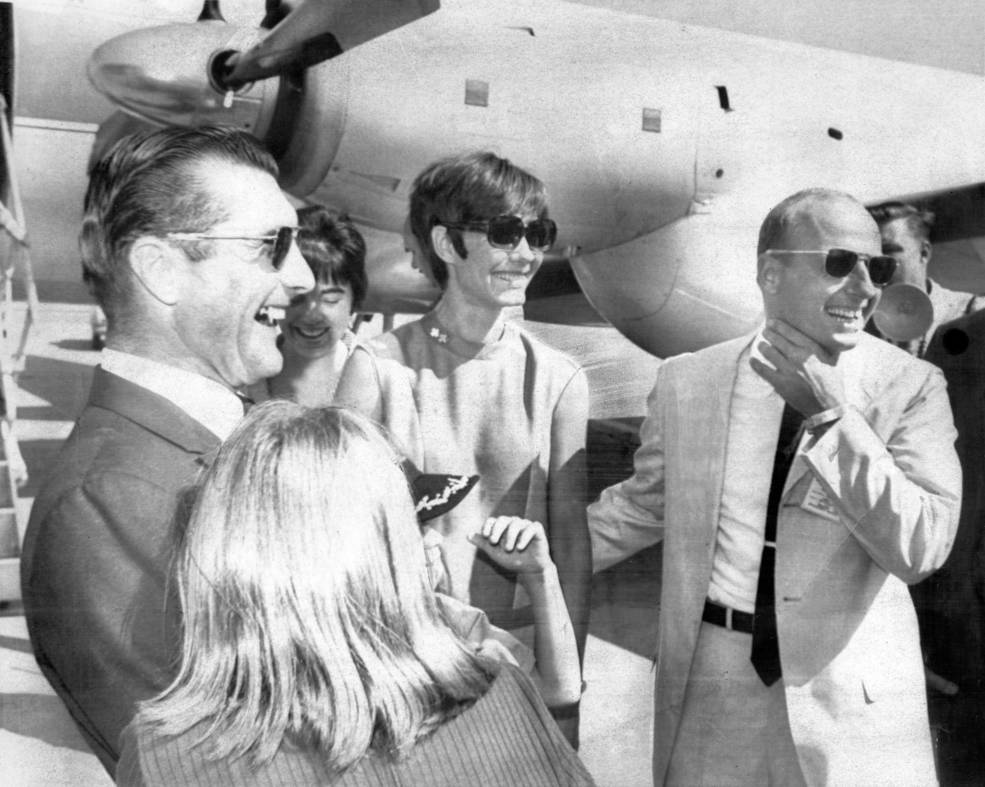
Left: Gemini XI astronauts Charles “Pete” Conrad, left, and Richard F. Gordon following their return to NASA’s Kennedy Space Center in Florida. Right: Gordon, left, and Conrad are reunited with their families at Ellington Air Force Base in Houston.
On Sept. 22, Conrad and Gordon summarized their mission, including narrating a film of their flight, to assembled reporters during a two-hour press conference in MSC’s main auditorium. In the same press conference, MSC Deputy Director George M. Low said, “The flight was truly fantastic.” Today, the Gemini XI spacecraft is on display at the California Science Center in Los Angeles.
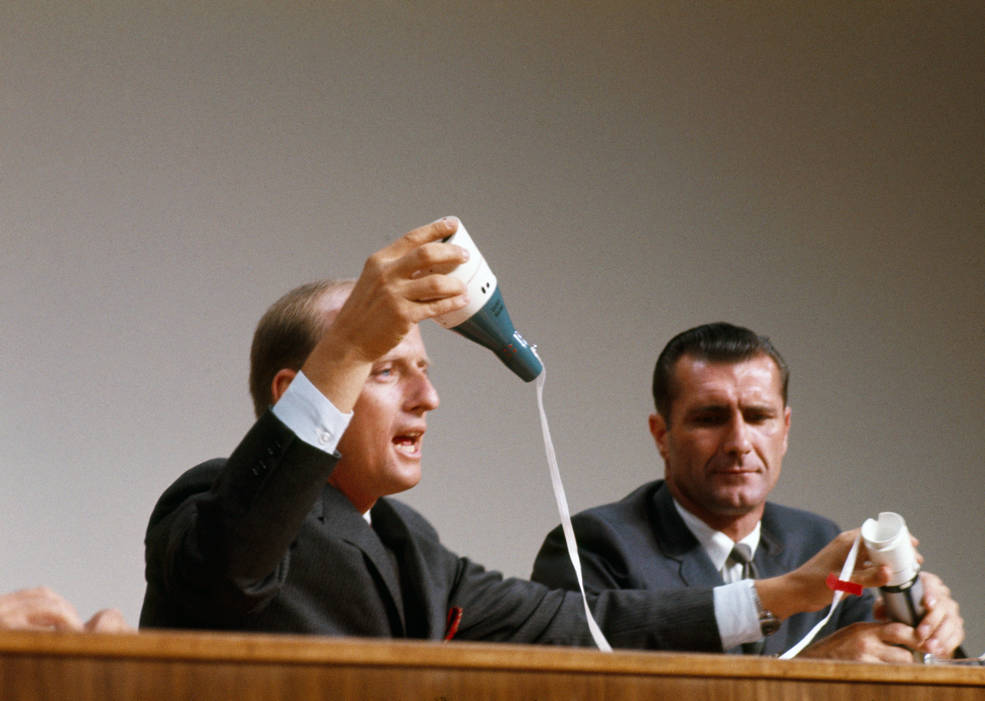
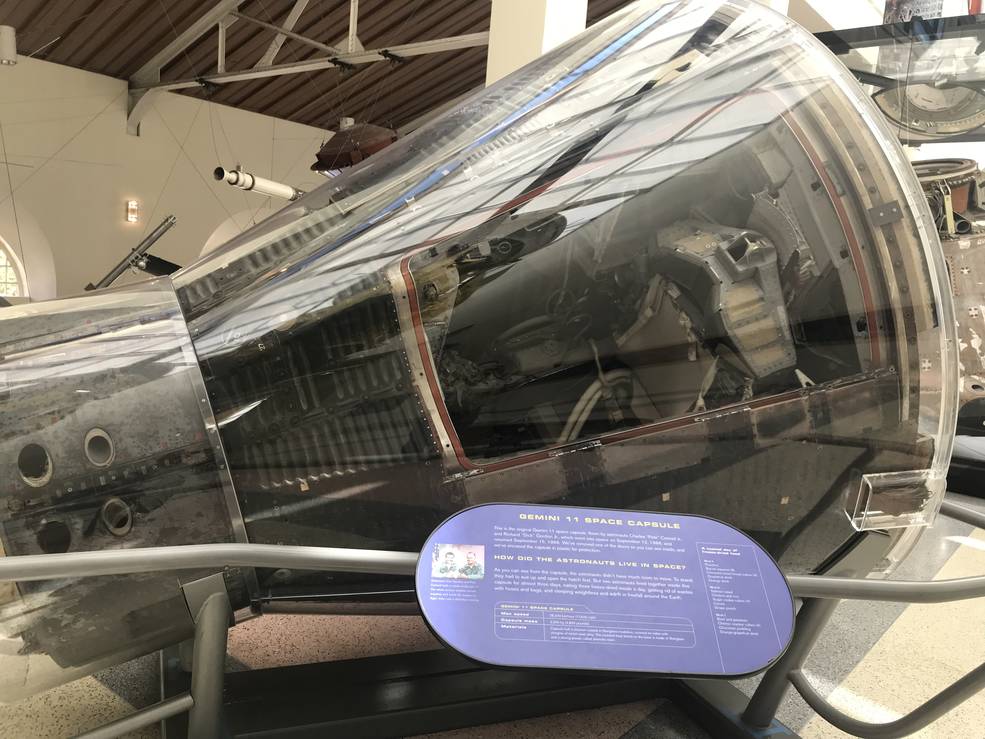
Left: Gemini XI astronauts Charles “Pete” Conrad, left, and Richard F. Gordon during the postflight press conference in the auditorium of the Manned Spacecraft Center, now NASA’s Johnson Space Center in Houston. Right: The Gemini XI capsule on display at the California Science Center in Los Angeles.
Enjoy a video of the Gemini XI mission.
John Uri
NASA Johnson Space Center



























